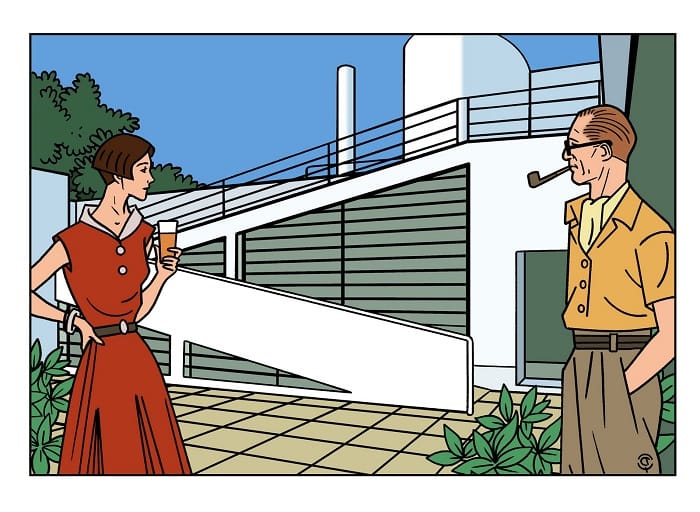Essay on Le Corbusier: Villa Savoye
Le Corbusier (1887 –1965), a talented Swiss-French architect and designer, is well known as the founder of modern architecture. Le Corbusier was born in Switzerland, but in 1930, he became a citizen of France. His unique buildings were constructed in Europe, India, and the USA. The architect was focused on designing the houses for the residents of the contemporary large cities, providing improved conditions for living in overcrowded areas. Le Corbusier was a well-educated man. He studied arts at the La-Chaux-de-Fonds Art School and architecture in Vienna. He was a “founder of the Congrès International d’Architecture Moderne (CIAM)” (Pinder 61). Le Corbusier’s talent had been widely used in urban planning. The most influential figures in his life were René Chapallaz, Auguste Perret, Josef Hoffmann, Peter Behrens, Ludwig Mies van der Rohe and Walter Gropius.
Cultural and societal influences
Le Corbusier managed to invert the established traditional design elements. He placed heavy architectural elements above the light ones located below. Besides, he “refused to enclose the ground story of the Villa Savoye with masonry walls”(Kleiner 887). Besides, he was influenced by new technologies. According to researchers, Le Corbusier “occupies a critical position in urbanism” due to the influence of the city planning(Pinder 61). He wanted to reconstruct modern cities, making considerable change in urban design. The architect criticized the disorder of modern cities and wanted to make them more impressive and appealing for living. He was focused on the transformation of spaces. According to Pinder, he was influenced by “the garden city movement” (63). Le Corbusier’s ideas contributed to the new styles in post-war reconstruction of the city buildings, especially during the housing crisis in France in the 1920s. The architect argued that “urban problems were rooted in a failure to come to terms with the demands of industry and the machine age” (Pinder 63). He paid special attention to the effects of urbanization and the consequences of mechanization for the city life.
A discussion of some of the most influential works by the subject
The most influential work is the Villa Savoye designed by Le Corbusier in 1929 in France. The Villa Savoye is a unique seminal building designed in the Modernist style. The Villa Savoye project is unique due to the uniqueness of design and construction. Le Corbusier used steel and ferroconcrete as the major construction materials, which helped to make the so-called “load” of the upper stories of the building by means of the slender columns (Kleiner 887).
The Villa Savoye was designed to serve as a private home, but the architect was influenced by cultural and social factors to create a house that could serve as “the machine for living” (Kleiner 887). Le Corbusier designed the Villa Savoye the way he did because the architect reflected the fundamental nature of his style in architecture. The Villa Savoye is considered to be the purest Modernist construction.
There are five major elements in the Villa Savoye’s architectural style, including slender columns, impressive flat roof terrace, open plan, ribbon windows and free façade (AD Classics: Villa Savoye / Le Corbusier, 2013). These elements were used by Le Corbusier as he was interested in technology and design of traditional steamships. The architect used simple design that resembled. His idea to create a unique steam-lined design was born out of new innovative engineering techniques of the 1920s-30s. Thus, cultural and social factors influenced Le Corbusier’s spatial planning, simplicity in details and minimalistic aesthetic and established the architect’s vision, making the Villa Savoye seminal.
Do you like this essay?
Our writers can write a paper like this for you!




 (1 votes, average: 4.00 out of 5)
(1 votes, average: 4.00 out of 5)